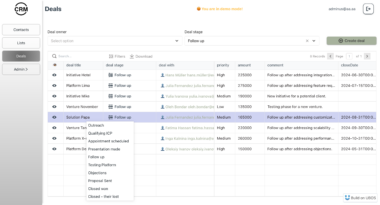Overview of MCP Server for PostgreSQL
The Model Context Protocol (MCP) Server is a cutting-edge solution designed to bridge the gap between AI models and PostgreSQL databases. By standardizing the interaction protocol, it enables seamless integration and interaction, providing AI models with the ability to access and manipulate external data sources efficiently. This server is particularly beneficial for enterprises looking to leverage AI capabilities without compromising on data integrity or security.
Key Features
- Connection Pooling: The server connects to a PostgreSQL database using advanced connection pooling techniques, ensuring optimal performance and resource utilization.
- Model Context Protocol Implementation: By implementing MCP, the server provides a standardized method for AI models to interact with databases, facilitating easier integration and data exchange.
- Schema Information as Resources: The server exposes database schema information as resources, allowing AI models to understand the database structure and interact more intelligently.
- SQL Query Execution with Retry Logic: It supports executing SQL queries with built-in retry logic, enhancing reliability and ensuring that queries are completed even in the face of transient errors.
- Graceful Error Handling: The server is equipped with mechanisms to handle connection errors gracefully, minimizing downtime and ensuring smooth operation.
Use Cases
- Enterprise Data Management: Companies can utilize the MCP server to enable AI models to access and manage large datasets stored in PostgreSQL databases, facilitating better decision-making and insights extraction.
- AI-Driven Applications: Developers can build AI-driven applications that require real-time data access and manipulation, thanks to the server’s robust protocol and seamless integration capabilities.
- Research and Development: Researchers can leverage the server to experiment with AI models on large datasets, improving model training and testing processes.
UBOS Platform
UBOS is a full-stack AI Agent Development Platform focused on integrating AI Agents into every business department. It provides tools to orchestrate AI Agents, connect them with enterprise data, and build custom AI Agents using LLM models and Multi-Agent Systems. The MCP Server is a critical component of this platform, offering a standardized protocol for AI model interaction with databases.
Installation and Configuration
To get started with the MCP Server, users need to have Node.js 20 or higher and a PostgreSQL database. The installation process involves cloning the repository, installing dependencies, and configuring the server using a .env file or shell configuration files. This flexibility ensures that the server can be set up in various environments with ease.
Integration with Cursor
The server integrates seamlessly with Cursor AI, supporting automatic and manual configuration options. This integration allows AI models to leverage the MCP protocol for enhanced data interaction, making it an ideal choice for enterprises looking to enhance their AI capabilities.
Error Handling and Troubleshooting
The MCP Server includes comprehensive error handling features, such as connection retry logic, detailed error logging, and graceful shutdown handling. It also provides troubleshooting guidance for common issues, ensuring that users can quickly resolve any problems that arise.
Overall, the MCP Server for PostgreSQL is a powerful tool for enterprises looking to harness the power of AI while maintaining robust data management practices. With its advanced features and seamless integration capabilities, it is an essential component of the UBOS platform, driving innovation and efficiency across various business domains.
Postgres MCP
Project Details
- endaoment/endaoment-postgres-mcp
- Last Updated: 4/3/2025
Recomended MCP Servers

Investidor10 MCP Server: A Model Context Protocol (MCP) server for interacting with the Status Invest API. Provides tools...

MCP Python Interpreter: run python code. Python-mcp-server, mcp-python-server, Code Executor

A Model Context Protocol (MCP) server that provides weather information and alerts using the National Weather Service (NWS)...

This MCP server integrates with the free IMF data API to provide a set of tools and resources...
MCP server for Bazi (八字) information
A CLI tool that generates concise and descriptive git commit messages using LLM
Playwright Model Context Protocol Server - Tool to automate Browsers and APIs in Claude Desktop, Cline, Cursor IDE...

hello-mcp is a tour and guide for beginners to Claude Desktop MCP Config Manager, designed to help them...

A template repository for MCP

comfyui-mcp-server
 From vibe coding to vibe deployment. UBOS MCP turns ideas into infra with one message.
From vibe coding to vibe deployment. UBOS MCP turns ideas into infra with one message.






